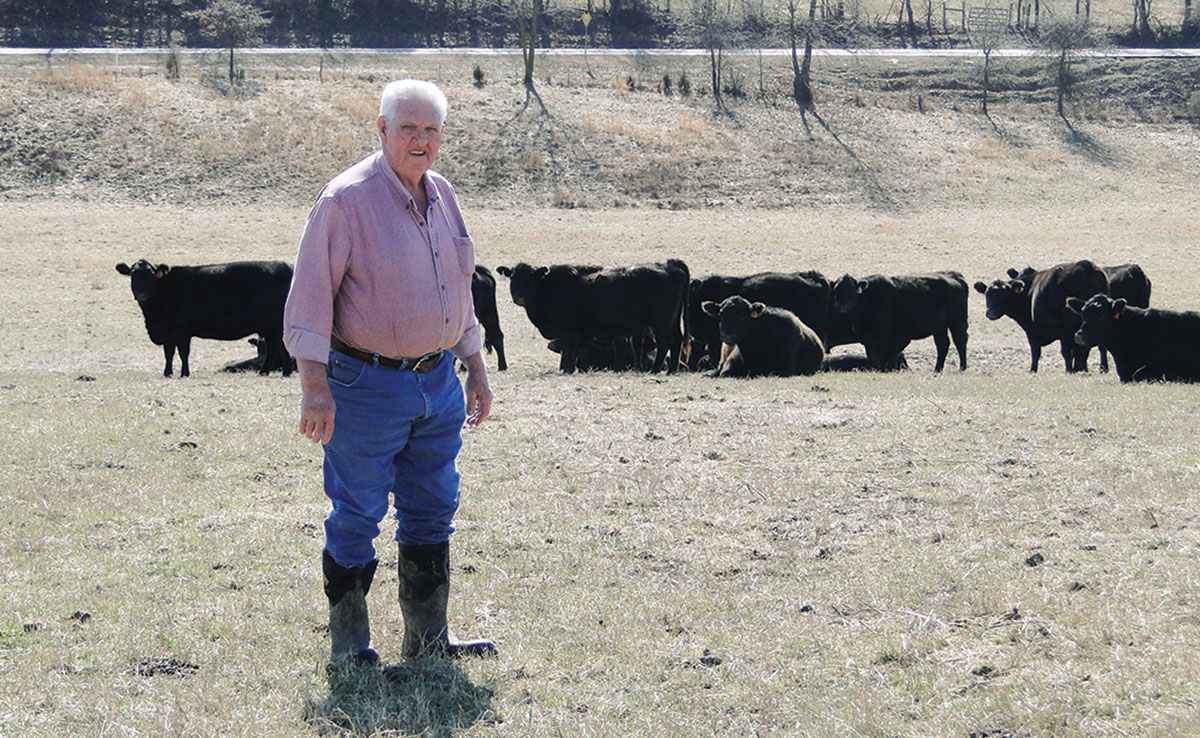
Wade Powell began his herd with commerical black females and a Salers bull
Wade Powell took dual credit high school courses and then attended Arkansas State University College in Jonesboro, Ark., year-round.
Consequently, he graduated with a teaching degree when he was only 20 and not quite ready to enter the classroom. For the first six years after college, he worked as a lineman for a co-op. During that time he met his future wife Sherry. Both teach grade school in Mammoth Spring, Ark.
One of the keys to the fulfilling life he and Sherry live is that Wade’s parents, Arliss and Patricia, had him working on the farm at a very early age, including caring for his own five cows and 10 sows. The livestock income not only paid for his college education but also provided a down payment for his own farm.
“Everything was different when I was a kid,” Wade said. “In our area farmers focused on hogs and had a few cattle on the side. My folks planned ahead and gave me an excellent start.”
The Powell’s farm consists of three smaller farms, with one 20 miles away. They run a black commercial cattle herd, with two farms running spring calving and the third fall calving. Early on, Wade purchased commercial Angus females and a Salers bull from a nearby farmer. The accidental combination led Wade to his preferred breeding pairing because he liked black hides and the maternal characteristics the Salers bull passed on. When Wade decided to raise his own replacement heifers, neighbor Larry LaRue luckily had Salers bulls for sale. Wade used Salers until his females became half Salers, then he switched to Angus bulls.
Good bulls are an important part of creating a productive herd. Wade likes to use EPDs in bull selection and looks for calving ease, maternal traits, docility and growth. Then he always wants to see the bull in person so he can check feet and legs, muscle and bone structure. Wade also checks their eyes, which he believes indicate temperament and general health. Always purchasing young bulls, no more than 2 1/2 years old, he keeps them until they are 6 or 7 by rotating them on the different farms.
Females can be culled for temperament issues or for not breeding back. Cows have one chance to skip a cycle before being sold. However, the most common reason for culling is age, which is 14 or 15 years old.
“My experience has been that if a cow produces well until she is 7 or 8, she will continue to produce well until 14 or 15, unless something unforeseen happens,” Wade explained.
The herd is worked twice a year with a quality vaccine protocol. Pour-on wormers are used in the spring and an injectable in the fall. The main health concern is anaplasmosis, which Wade feels is a vector from flies and tics, a problem he is still working to solve. He is currently using a mineral supplemented with fly control that requires a veterinarian prescription. Recently, a Kansas college developed an anaplasmosis vaccine and is looking for a partner to make it.
“If that all actually comes about, that vaccine will be a huge benefit to our industry,” Wade said.
The other part of his health protocol is weaning his calves at 8 months and then keeping them an additional 45 to 60 days. During that time, they receive a second round of vaccinations and are fed a 12-percent protein ration at a rate of 8 pounds per day, per calf to promote healthy growth. Calves are sold at Ozark Regional Sale Barn in West Plains, Mo., with the Missouri border being less than a mile from their home.
Though the Powell’s have always raised their own hay, Wade is considering expanding the cattle operation as well as the number of pounds of meat produced per acre. Buying rather than producing hay may be part of the process.
“It’s a matter of economics,” Wade said. “If purchasing an important piece of equipment is the only way to keep haying, I’m going to have to put pencil to paper and figure out the best way to increase my productivity and efficiency. Other factors include how many cows I can put on each acre without overgrazing or degrading the soil. People often don’t consider time as a cost, but if everything is completed properly at the right time, efficiency is maximized. Experience and observation have taught me an important thing is to have a plan that includes a goal, a direction, and a general time frame combined with patience and flexibility.”
Wade acknowledges he has a true partner in his wife Sherry.
“Sherry is always right there at my side and forever exceeding my expectations,” Wade confessed.
One of the things Wade is most grateful for was the opportunity to raise his sons Collin and Coltin on the farm with each son now owning his own farm.
“I never will forget the day Collin came home for a weekend during college and said he had never realized how hard we worked,” Wade said. “That was when I knew we had given our sons the work ethic they needed to succeed in whatever they choose to do.”







